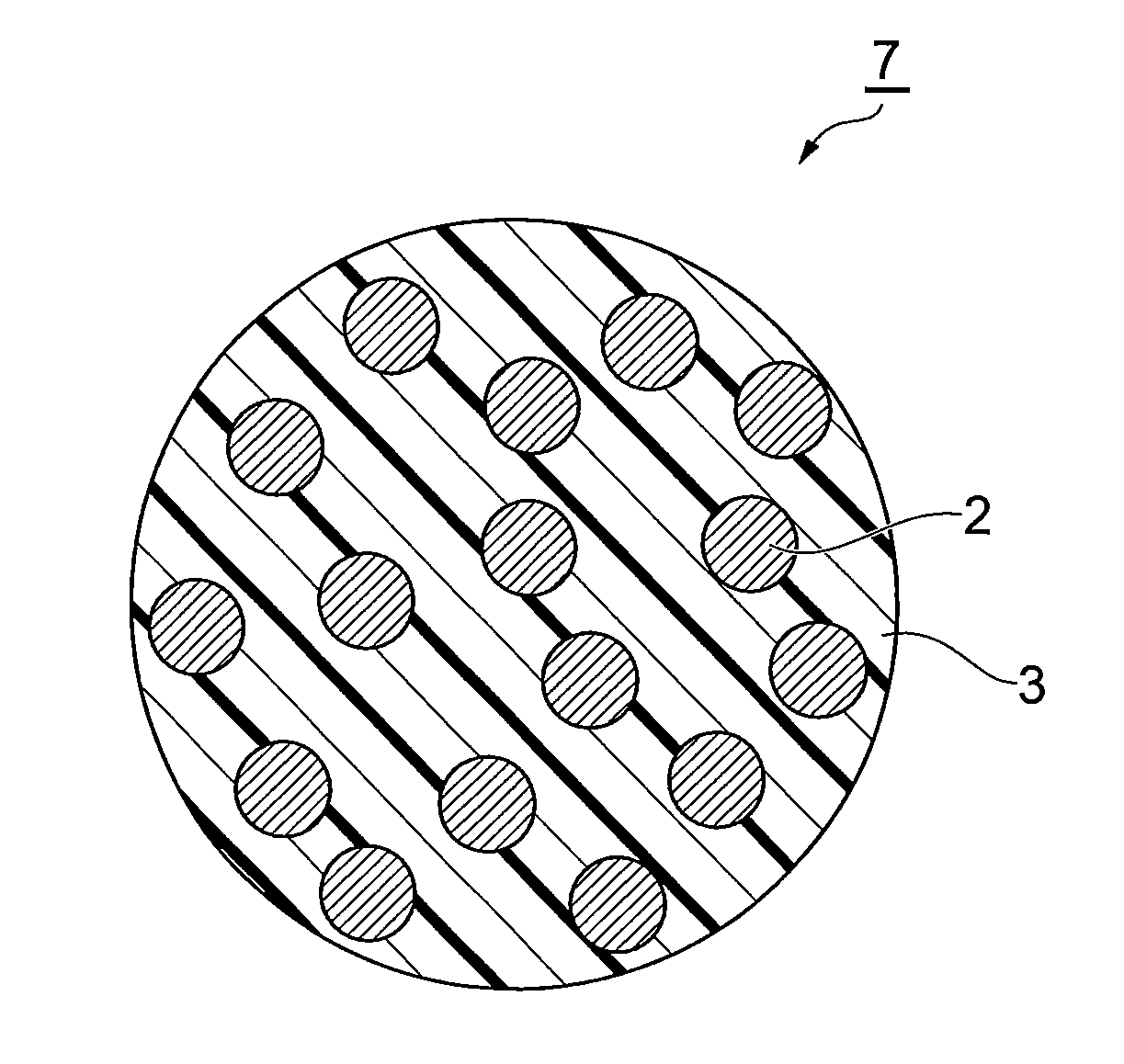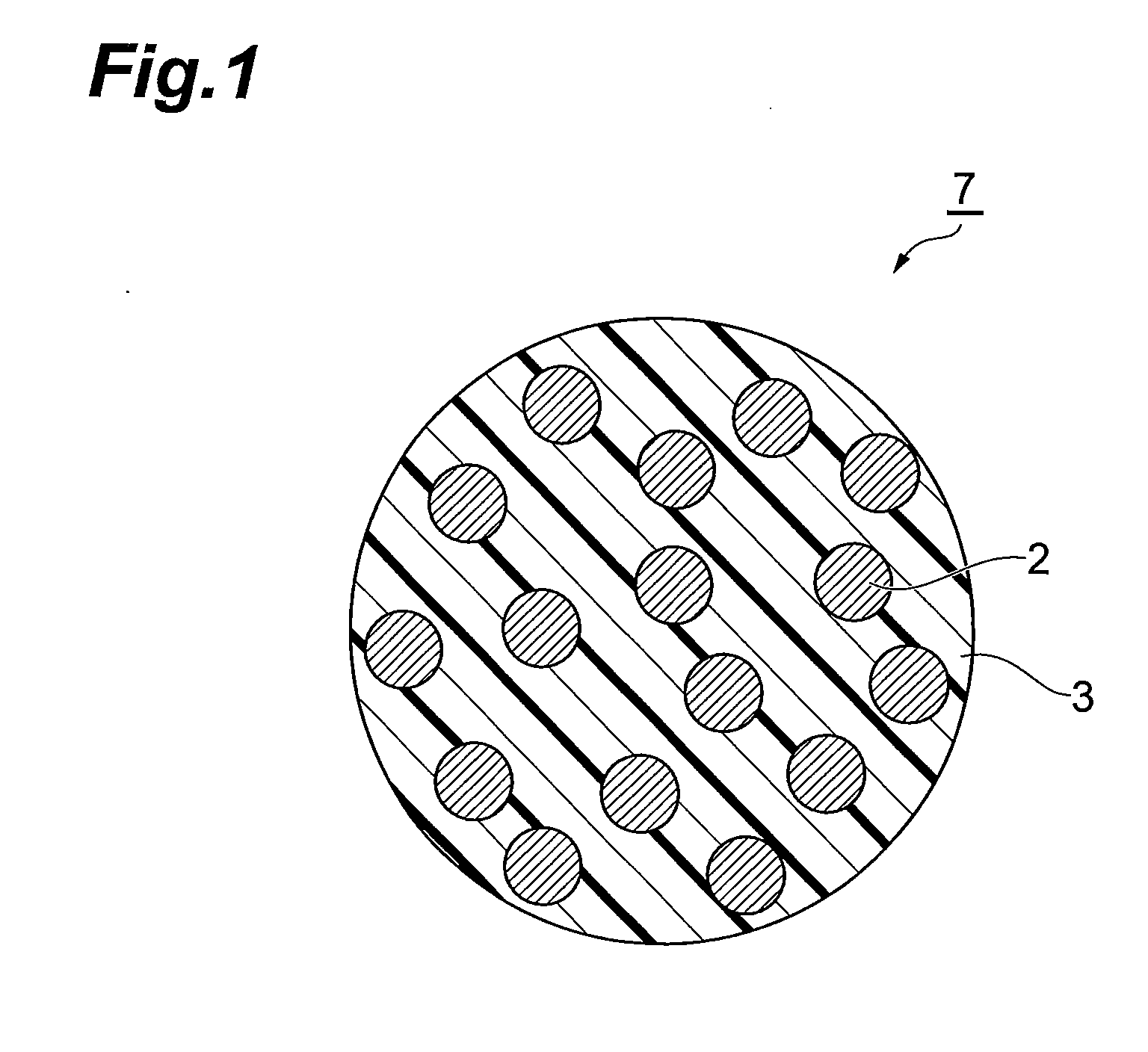Anisotropic conductive particles
- Summary
- Abstract
- Description
- Claims
- Application Information
AI Technical Summary
Benefits of technology
Problems solved by technology
Method used
Image
Examples
example 1
Production of Conductive Fine Particles
[0062]Scaly silver powder 1 having a particle size distribution of 0.005-10 μm was obtained by a chemical reduction method. The obtained silver powder 1 was classified to obtain scaly silver powder 2 having a mean particle size of 0.25 μm and a maximum particle size of 0.4 μm.
[0063]The starting monomer for an organic insulating material was prepared by mixing 60 parts by mass of tetramethylolmethane triacrylate, 20 parts by mass of divinylbenzene and 20 parts by mass of acrylonitrile. Also, silver powder 2 was added at 120 parts by volume to 100 parts by volume of the starting monomer for the organic insulating material, and a bead mill was used for dispersion of the silver powder for 48 hours. After mixing 2 parts by mass of benzoyl peroxide with the silver powder-dispersed composition, the mixture was loaded into 850 parts by mass of a 3 mass % polyvinyl alcohol aqueous solution and thoroughly stirred, after which it was suspended with a homo...
example 2
[0065]The silver powder 2 prepared in Example 1 was impregnated with a solution of 3 parts by mass of N-(2-aminoethyl)-3-aminopropyltrimethoxysilane in 100 parts by mass of methyl ethyl ketone, and stirring was carried out for one day and night for hydrophobic treatment of the silver powder surface. Anisotropic conductive particles 2 were obtained in the same manner as Example 1, except for using this silver powder with a hydrophobic-treated surface. The resistance of the anisotropic conductive particles 2 before application of pressure and the resistance after 50% flattening were measured by the same method as Example 1, giving the results shown in Table 1.
example 3
[0066]The anisotropic conductive particles prepared in Example 1 were classified to obtain anisotropic conductive particles 3 having a mean particle size of 0.5 μm. The resistance of the anisotropic conductive particles 3 before application of pressure and the resistance after 50% flattening were measured by the same method as Example 1, giving the results shown in Table 1.
PUM
| Property | Measurement | Unit |
|---|---|---|
| mean particle size | aaaaa | aaaaa |
| mean particle size | aaaaa | aaaaa |
| mean particle size | aaaaa | aaaaa |
Abstract
Description
Claims
Application Information
 Login to View More
Login to View More - R&D
- Intellectual Property
- Life Sciences
- Materials
- Tech Scout
- Unparalleled Data Quality
- Higher Quality Content
- 60% Fewer Hallucinations
Browse by: Latest US Patents, China's latest patents, Technical Efficacy Thesaurus, Application Domain, Technology Topic, Popular Technical Reports.
© 2025 PatSnap. All rights reserved.Legal|Privacy policy|Modern Slavery Act Transparency Statement|Sitemap|About US| Contact US: help@patsnap.com


